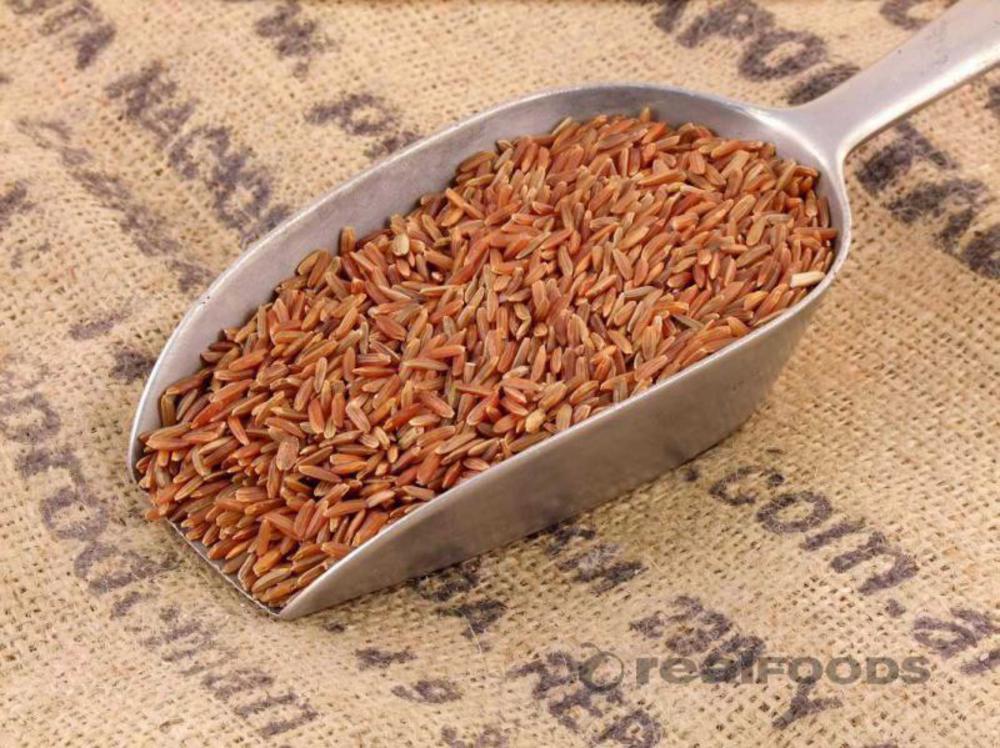
What is Rice?
Rice is responsible for 20% of the entire world population's calorie consumption. It's been cultivated for at least 8000 years (some estimate it may even be as long as 15 000 years). It is a labour intensive grain, requiring a lot of water to grow.
The outer inedible hull is removed through milling, this creates brown rice. If you continue milling and remove the bran and husk layer, white rice is created. White rice has far fewer nutrients than brown rice, however it does keep longer and cooks quickly. The most nutritious form of rice is GABA rice, which is brown rice soaked for around 20 hours and germinated. You can germinate your own or it's available here to buy.
Rice is usually characterised as long, medium or short-grain.
Long-grain is usually fragrant and holds its shape well after cooking. Basmati, fragrant jasmine, and wehani are all types of long-grain rice.
Medium-grain is stickier and creamier when cooked, both risotto and sushi rices are usually medium-grain.
Short-grain rice is the stuff you'll find in rice pudding and it's also used in risottos or anything requiring a sticky starch release.
Or add colour to your dishes by using black or red rice.
Rice is high in fibre and is over 70% carbohydrate (the main source for your body's energy). It is a good source of vitamin E, B vitamins (thiamine and niacin) and potassium. How nutritional your rice is depends on the type of rice and the soil conditions. Brown rice contains significantly more managanese, selenium, Essential Fatty Acid's and wholegrain fibre than the dehulled white rice does. Brown rice is also is far lower on the Glycaemic Index than white as the fibre helps stabilise blood sugar levels.
GABA rice was developed in the U.N. Year of Rice. It substantially increases gamma-aminobutyric acid, a very important regulator of neurotransmission and other essential functions. People suffering from anxiety, insomnia and epilepsy do not produce high levels of GABA naturally. It's incredibly useful in this bio-available form. Intake of GABA rice over time helps lower blood pressure, improve kidney function and reduce sleeplessness. Sprouting the rice also improves the levels of vitamin E, fibre, magnesium and antioxidants.
How do I prepare Rice?
Generally speaking the absorption method works the best for cooking rice. You'll need 2 parts water (or stock) to one part rice, a little salt and a tight fitting lid for your pan.
For brown rice you'll need around 40 minutes (but possibly up to around 55 minutes an hour depending on the rice and whether it has been pre-soaked), for white rice 12- 15 minutes. Do check the manufacturer's instructions and adjust accordingly.
You'll want about 2 1/2 oz per person. That's 65 ml, because you measure rice by volume NOT weight for cooking.
Rinse the rice well under cold running water and remove any debris. Boil the kettle, warm a smidgen of oil in a wide-based pan, measure the rice, add it to the pan and coat it with a little oil. Measure the water (remember 2 parts water or stock to 1 part rice, so 65ml needs 130 ml of liquid.) Add the water to the the pan, let it bubble up, then pop a tight fitting lid on the pan and turn the heat down to its lowest setting. Set a timer and when it's done check the water has been completely absorbed by tipping it to one side, if not it needs a few more minutes. Chuck a clean tea towel over it to absorb the steam and after 5 or 10 minutes fluff it up with a fork. Done!
GABA Rice is germinated brown rice, it takes a little less cooking time than brown rice so cook for 30 minutes and check. It should be slightly chewy, but softer than brown rice is usually. It does depend on how much water the rice has absorbed, so do check regularly so you don't overcook and lose out on all the nutrients.
To germinate your own rice, you'll need to soak your chosen rice in warm water for up to 20 hours. Rinse the rice well a few times and swirl it about. Soak it in the water, you'll want to change the water around every 5-6 hours. When the rice begins to sprout (you'll see a tiny shoot), rinse it and cook. If not using immediately, drain very well, pat dry and store in the fridge. Rinse again before using.
Recipes
Try a savoury breakfast rice inspired by Japanese cuisine
This Caribbean rice and peas recipe is always popular
Vegetarian Meatballs are tasty and relatively inexpensive
This dairy free rice pudding recipe is delicious
Real Foods How To Cook Guides